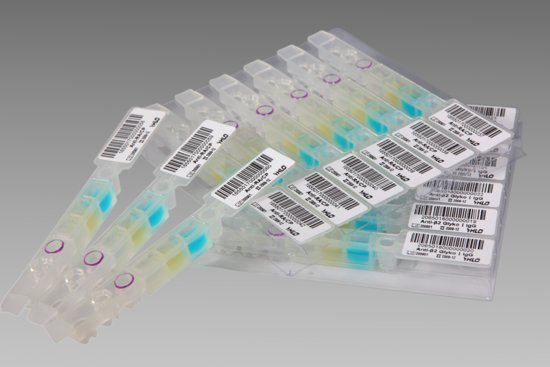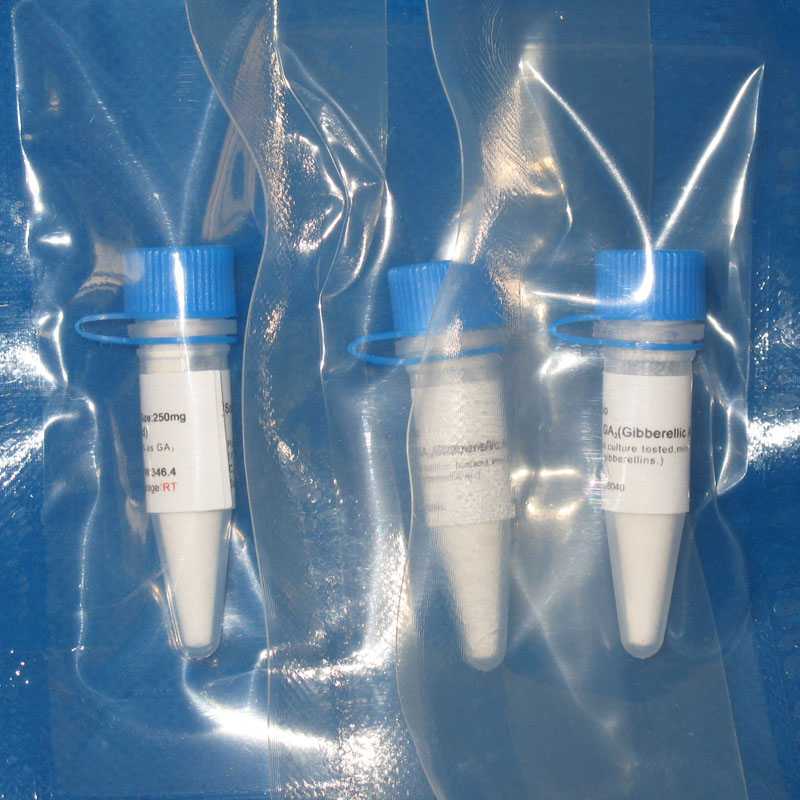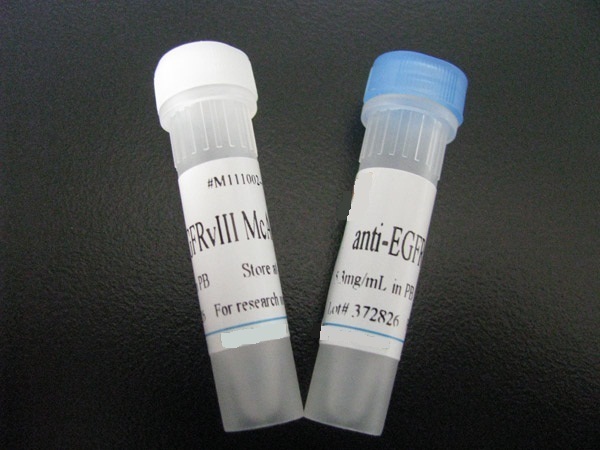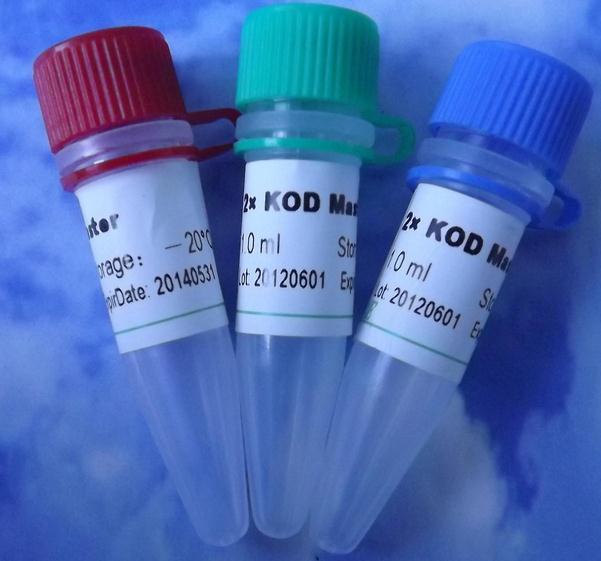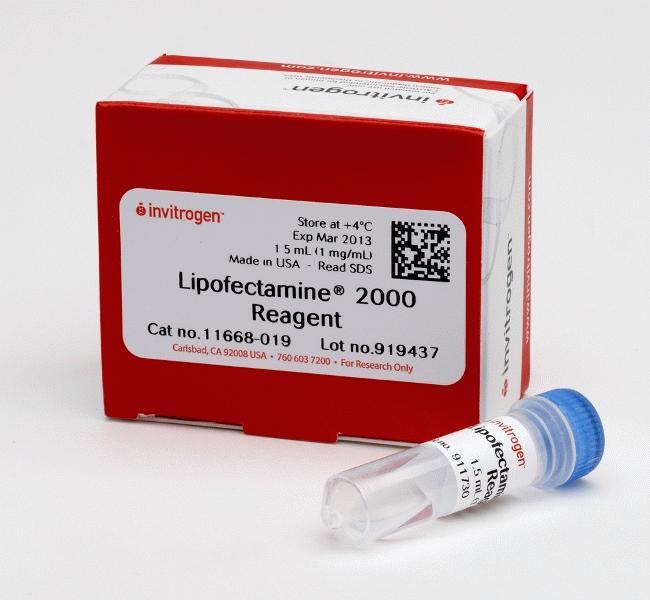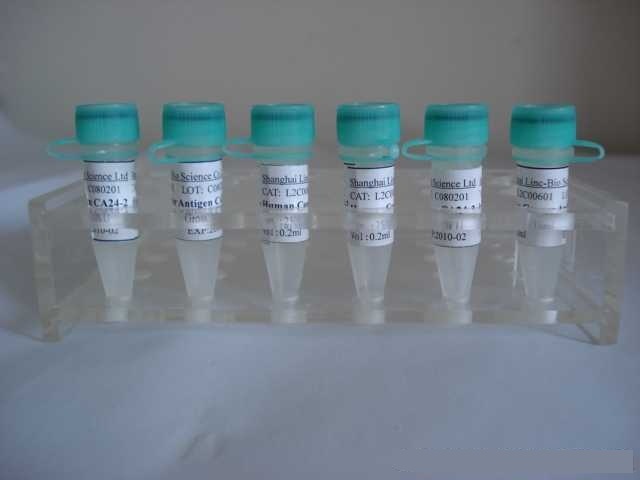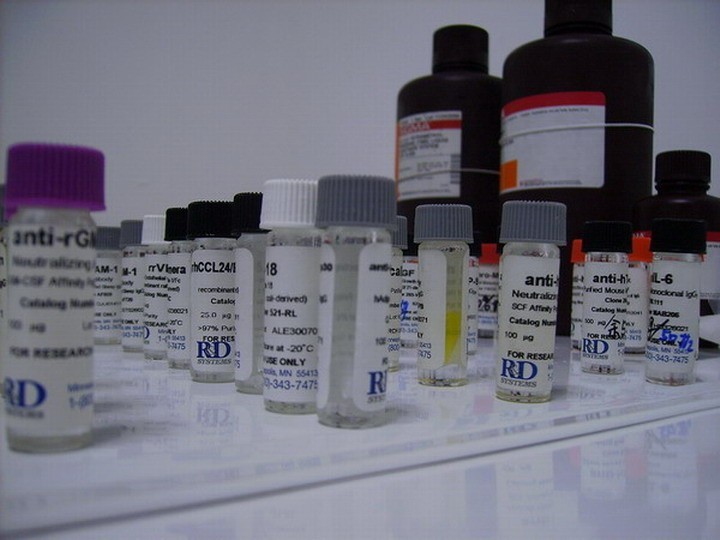G氨基丁酸受体δ/GABAA Rδ抗体英文名称 Anti-GABRD/GABA A Receptor delta
中文名称 G氨基丁酸受体δ/GABAA Rδ抗体
别 名 GABA(A) receptor subunit delta; GABRD; Gamma aminobutyric acid GABA A receptor delta; Gamma aminobutyric acid receptor delta subunit precursor GABA A receptor; Gamma-aminobutyric acid receptor subunit delta; GBRD_HUMAN; MGC45284.
浓 度 1mg/1ml
规 格 0.2ml/200μg
纯化的抗体可通过不同的途径获取,有些G氨基丁酸受体δ/GABAA Rδ抗体可通过下述方法制备或从商家购买。从商家购买的抗体,通常附有正确的储存方法。
1)工作液应在4℃下融化并存放,可能稳定达数月。
2)如果没有特殊原因而避免使用叠氮钠,亦可加入叠氮钠,浓度为0.02%。将纯化的抗体样本分装成合适的体积,于-20℃保存。
3)纯化的抗体溶液应以较高的浓度(如lmg/m1)在中性pH下保存。:常用的抗体储存浓度高达l0mg/ml。较低浓度的抗体冻存前应浓缩。所有标准的浓缩方法(如超滤法),皆可使用。还有一个简单的方法是用蛋白A或蛋白G亲和柱来浓缩溶液。如果纯化的抗体不是用于标记,可将它们以较低浓度储存于加有1%BSA的溶液中。
4)经纯化制备的抗体在常用的缓冲液中是稳定的。其DH应保持在中性左右。如果pH在7-8之间,即使保存多年,对抗体也无损害。多数情况下,盐浓度适于保持在0-150mmol/L之间,但在长期存放的抗体中,盐溶液浓度高达500mmol/L时,对G氨基丁酸受体δ/GABAA Rδ抗体能有损害。如果没有其他说明.律议用PBS或50mmol/LTris(DH8.0)溶液长期存放抗体。
抗体来源 Rabbit
克隆类型 polyclonal
交叉反应 Human, Mouse, Rat, Chicken, Cow, Horse, Rabbit, Sheep
产品类型 一抗
研究领域 神经生物学 细胞膜受体 G蛋白偶联受体 G蛋白信号
蛋白分子量 predicted molecular weight: 49kDa
性 状 Lyophilized or Liquid
免 疫 原 KLH conjugated synthetic peptide derived from human GABRD/GABA A Receptor delta
亚 型 IgG
纯化方法 affinity purified by Protein A
储 存 液 Preservative: 15mM Sodium Azide, Constituents: 1% BSA, 0.01M PBS, pH 7.4
产品应用 WB=1:100-500 ELISA=1:500-1000 IHC-P=1:100-500 IHC-F=1:100-500 Flow-Cyt=1:100-500 ICC=1:100-500 IF=1:100-500
(石蜡切片需做抗原修复)
not yet tested in other applications.
optimal dilutions/concentrations should be determined by the end user.
保存条件 Store at -20 °C for one year. Avoid repeated freeze/thaw cycles. The lyophilized antibody is stable at room temperature for at least one month and for greater than a year when kept at -20°C. When reconstituted in sterile pH 7.4 0.01M PBS or diluent of antibody the antibody is stable for at least two weeks at 2-4 °C.
Important Note This product as supplied is intended for research use only, not for use in human, therapeutic or diagnostic applications.
G氨基丁酸受体δ/GABAA Rδ抗体产品介绍 GAD-65 and GAD-67, glutamate decarboxylases, function to catalyze the production of GABA (gamma-aminobutyric acid). In the central nervous system GABA functions as the main inhibitory transmitter by increasing a Cl- conductance that inhibits neuronal firing. GABA has been shown to activate both ionotropic (GABAA) and metabotropic (GABAB) receptors as well as a third class of receptors called GABAC. Both GABAA and GABAC are ligand-gated ion channels, however, they are structurally and functionally distinct. Members of the GABAA receptor family include GABAA R Alpha 1-6, GABAA R Beta 1-3, GABAA R Gamma1-3, GABAA R delta, GABAA R delta, GABAA R Gamma1 and GABAA R Gamma 2. The GABAB family is composed of GABAB R1 Alpha and GABAB R1 Beta. GABA transporters have also been identified and include GABA T-1, GABA T-2 and GABA T-3 (also designated GAT-1, -2, and -3). The GABA transporters function to terminate GABA action.
Function : GABA, the major inhibitory neurotransmitter in the vertebrate brain, mediates neuronal inhibition by binding to the GABA/benzodiazepine receptor and opening an integral chloride channel.
Subunit : Generally pentameric. There are five types of GABA(A) receptor chains: alpha, beta, gamma, delta, and rho
Subcellular Location : Cell junction, synapse, postsynaptic cell membrane; Multi-pass membrane protein. Cell membrane; Multi-pass membrane protein.
DISEASE : Defects in GABRD are the cause of susceptibility to generalized epilepsy with febrile seizures plus type 5 (GEFS+5) [MIM:604233]. Generalized epilepsy with febrile seizures-plus refers to a rare familial condition with incomplete penetrance and large intrafamilial variability. Patients display febrile seizures persisting sometimes beyond the age of 6 years and/or a variety of afebrile seizure types. GEFS+ is a disease combining febrile seizures, generalized seizures often precipitated by fever at age 6 years or more, and partial seizures, with a variable degree of severity.
Defects in GABRD are the cause of susceptibility to idiopathic generalized epilepsy type 10 (IGE10) [MIM:613060]. A disorder characterized by recurring generalized seizures in the absence of detectable brain lesions and/or metabolic abnormalities. Generalized seizures arise diffusely and simultaneously from both hemispheres of the brain.
Defects in GABRD are the cause of susceptibility to juvenile myoclonic epilepsy type 7 (EJM7) [MIM:613060]. A subtype of idiopathic generalized epilepsy. Patients have afebrile seizures only, with onset in adolescence (rather than in childhood) and myoclonic jerks which usually occur after awakening and are triggered by sleep deprivation and fatigue.
Similarity : Belongs to the ligand-gated ion channel (TC 1.A.9) family. Gamma-aminobutyric acid receptor (TC 1.A.9.5) subfamily.
GABRD sub-subfamily.
Database links : UniProtKB/Swiss-Prot: O14764.2
![]()



